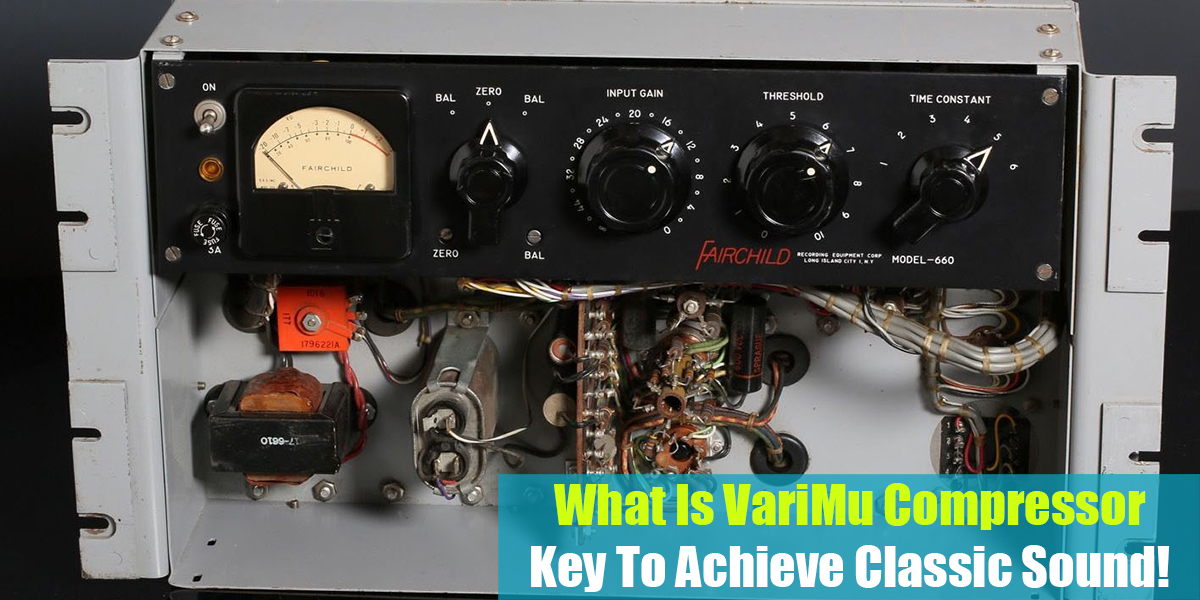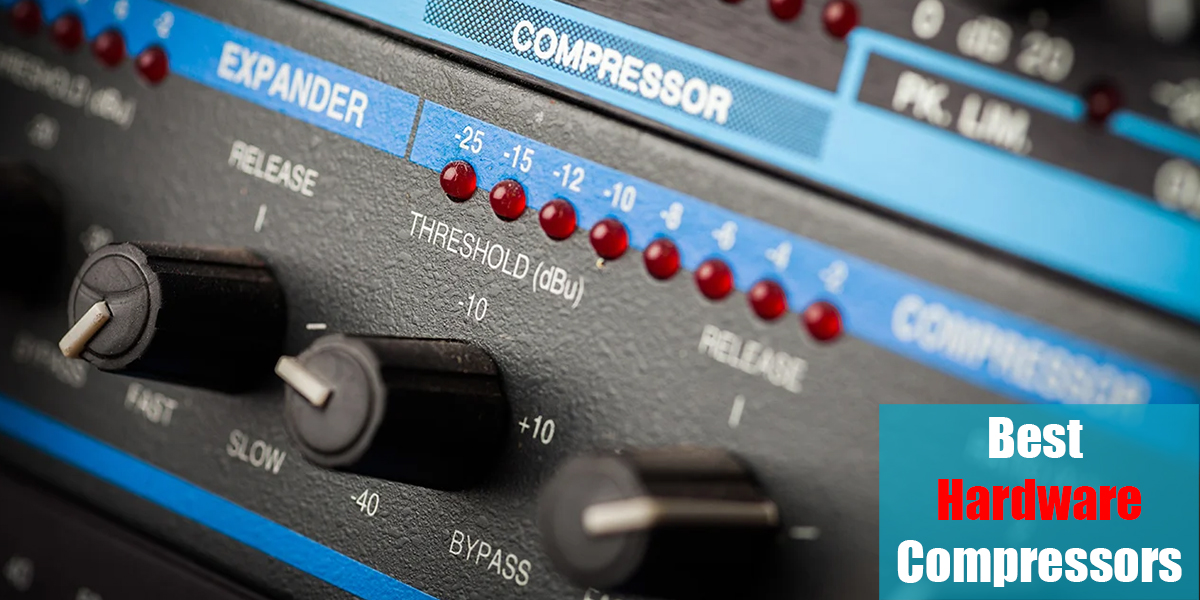Essential Dj Tips
Introduction
Are you an aspiring DJ looking to take your craft to the next level? Have you been spinning for a while but feel like something’s missing from your set? Well, you’ve come to the right place!
Here, I’ll be giving you essential tips and tricks that will help elevate your skills and give your mixes more pizzazz. Whether you’re a beginner or an experienced DJ, these tips will teach you how to:
- Mix in key
- Beat match by ear effectively
- Use effects to add depth and dimension to your sound
So if it’s innovation and creativity you seek – let’s get started and we will find a way to improve your DJ skills.
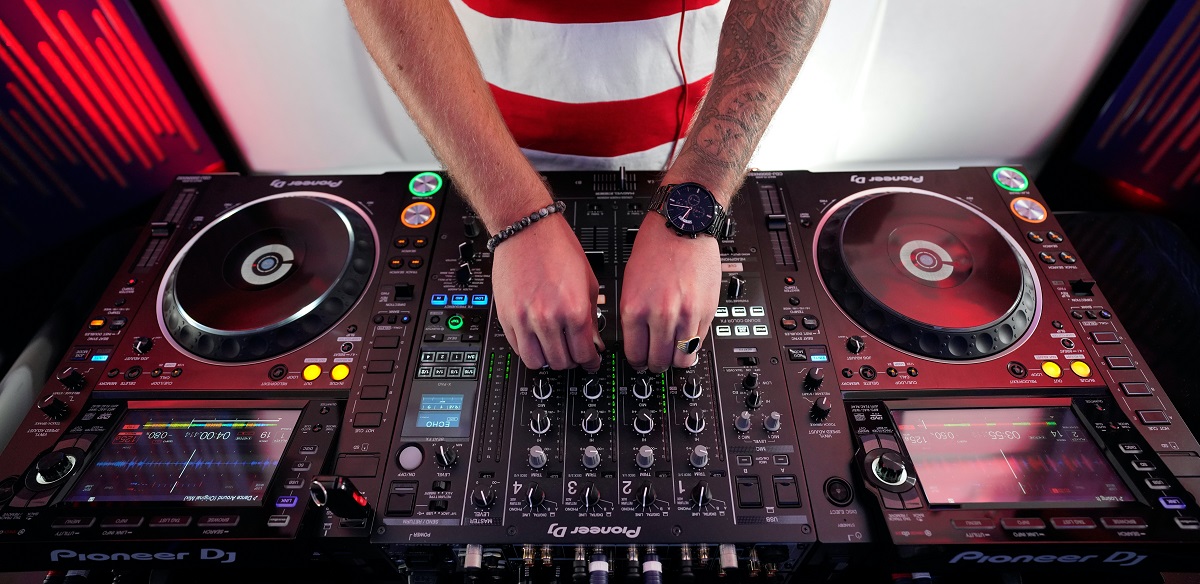
1. Preparing Your DJ Set
Before your set, it’s important to do your homework and prepare – ‘fail to prepare, prepare to fail!’ Your DJ set will be only as good as the setup you have prepared. That’s why it is essential to become familiar with your DJ equipment, software, and controller ahead of time.
Having a good understanding of the basics of DJing before you start will allow you to get comfortable with working on all the different elements during your performance. Make sure that everything is functioning properly and that you know how each piece works together in order for the show to go smoothly.
Don’t forget about the sound check! This should be done at least an hour before going live so that any sound issues can be quickly fixed. Test out every track on a variety of systems so that you can hear exactly what your audience will experience when they listen. Pick out some songs ahead of time just in case there are technical difficulties or if things don’t feel quite right during the set.
Also, pay attention to how your tracks transition from one another; this is what makes a great mix! Experiment with blending different genre combinations and see what kind of unique sounds come out. The more creative and innovative you can make it, the better! Consider using effects such as looping, reverb, EQs, and other tools available on most modern DJ controllers that help bring life into a mix; these are great for getting crowds moving too.
At this point, take in all information around you – crowd size/energy level/song requests – then use this feedback when creating transitions between songs and deciding which ones work best in certain situations. With practice comes perfection – if something doesn’t quite flow right or sounds off then adjust accordingly until it does. The DJ setup will be your performing area and the DJ mixer your steering wheel. More on DJ mixers can be found on the website.
2. Mixing in Key
Making sure your mixes are in key is essential for creating seamless transitions between songs and producing a polished set. Mixing in a key is one of the most important techniques that DJs should master, whether you’re just starting out or an experienced pro.
It involves blending two tracks together using harmonic mixing, which takes into account their musical keys and the compatibility of different chords and melodies. This helps to create a smooth blend between songs and makes them sound like one cohesive track rather than two completely separate ones.
One way to achieve this is by using DJ software with a key-matching feature that will automatically sync up tracks so they are perfectly aligned. Additionally, DJs can learn how to manually mix in key by listening for tonal changes in both tracks as they transition from one song to the next.
By mastering this technique, DJs can take their sets to the next level and become more creative with their mixes while still maintaining a professional sound. With practice and dedication, anyone can pull off mixing in key like a seasoned veteran! This is in my opinion one of the best advice for beginners that I received when I was starting out. This will improve your DJ sets and you will become a club DJ in no time!
3. Beat Matching by Ear
Listening to the beats of two songs and matching them up is a skill that can be mastered with practice and determination, known as beat-matching by ear. This technique is essential for any DJ looking to take their mixing skills to the next level. Beat-matching by ear is crucial for both beginner and advanced DJs, as it allows them to create seamless transitions between different tracks. It’s also an important way to avoid playing songs in different keys at the same time, which can sound jarring or off-beat.
To get started with beat-matching by ear, begin by listening carefully until you can hear the tempo of each track you’re mixing together. Then look for a few key elements: first listen for the kick drum or bassline, then search for hi-hats and other percussion sounds that match up with one another across both tracks. Once you’ve identified those elements in each song, try slowly increasing or decreasing the tempo of one song until they sync up perfectly.
Practice makes perfect when it comes to mastering this skill – so don’t give up if it doesn’t come naturally right away! Taking your time and experimenting with different combinations will help build your confidence as a DJ over time. As long as you pay attention to detail and keep an open mind while exploring new options, you’ll quickly become proficient at beat-matching by ear – a key component of successful DJ sets! The journey as a DJ is a really nice experience and as a new DJ, this is something you should take care about.
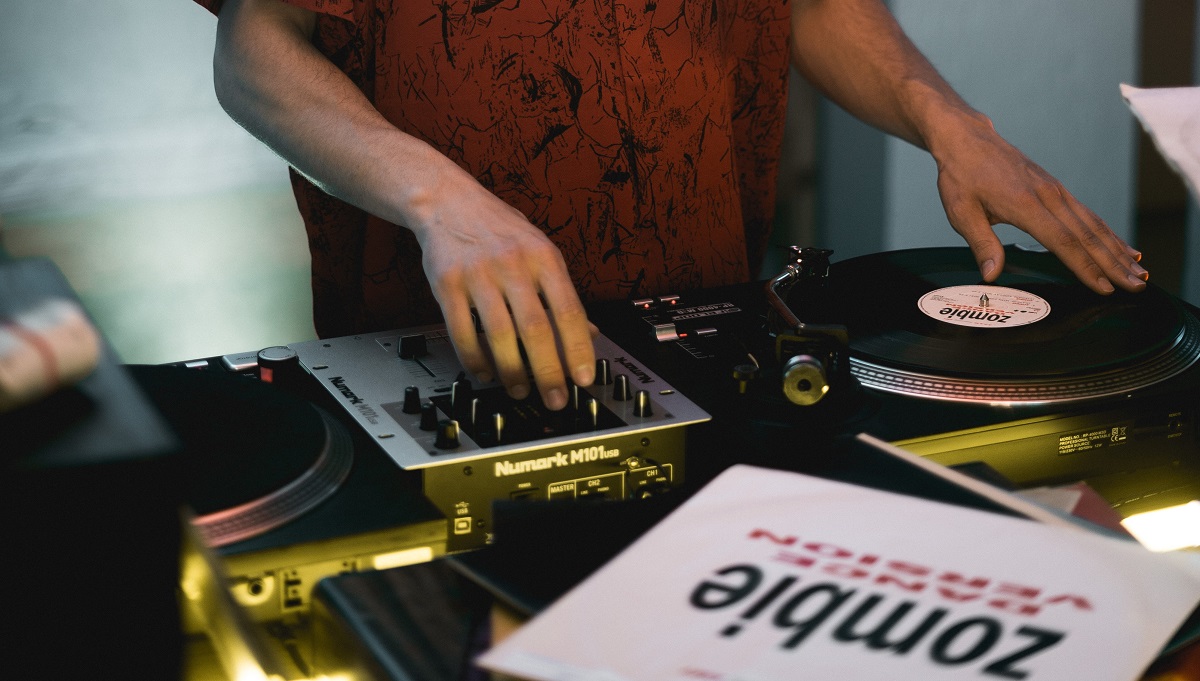
4. Watch Out for Red Lights
As a DJ, it’s important to stay aware of the red lights that appear during your performance. They can be an indication of impending issues with sound levels or other technical difficulties. Here are some essential tips to watch out for:
- Pay attention to the lights on your mixer and equipment. They will clue you in on any technical problems that might arise.
- Know how to properly adjust levels to avoid distortion and other audio issues.
- Be aware of any potential feedback loops that could lead to sudden loud noises during your set.
- Have backups ready for all your gear. This way, you can easily replace a malfunctioning piece during gigs or shows.
It is critical for DJs to keep up their skillset by constantly learning new techniques and staying informed about the latest technology, trends, and music industry developments. This will help them create unique sets at their gigs and events. Being mindful of what the red lights mean will prevent any major mistakes from happening mid-set, which could ruin an otherwise excellent performance!
Understanding these warning signals is an invaluable part of being a professional DJ who understands their craft inside and out. It’s essential knowledge required for success in this field. This is one of the most common DJ mistakes that you can make and can easily ruin your DJ mixes and equipment.
5. Turn Down the Volume to Protect Your Ears
You should always turn down the volume when DJing to protect your ears from permanent damage. A study found that 1 in 5 DJs experience hearing loss due to not properly monitoring their sound levels. When it comes to DJ tips and tricks, this is one of the most important ones every DJ should know.
As a professional DJ, having control over your sound levels is an essential skill that you must acquire and master. You need to be aware of how loud your music is at all times, so that you can adjust it accordingly if necessary.
If the venue has a noise limit, make sure to stay within it. Not only will this keep you from getting fined or shut down by local authorities, but it also helps ensure that everyone in the crowd can enjoy the music without damaging their hearing.
At clubs and other venues with louder environments, try using headphones while mixing instead of relying on monitors for reference as they are much safer for your ears in the long run.
Another useful DJ tip is to take regular breaks between sets. This gives your ears time to recover from prolonged exposure to loud noises, which reduces strain on them over time.
Finally, invest in some good quality earplugs or earmuffs, which will further protect your ears whenever you’re DJing in noisier areas like a club or festival stage. Taking these precautions now will help prevent any long-term hearing issues later on down the line! Fundamental DJ procedure folks!
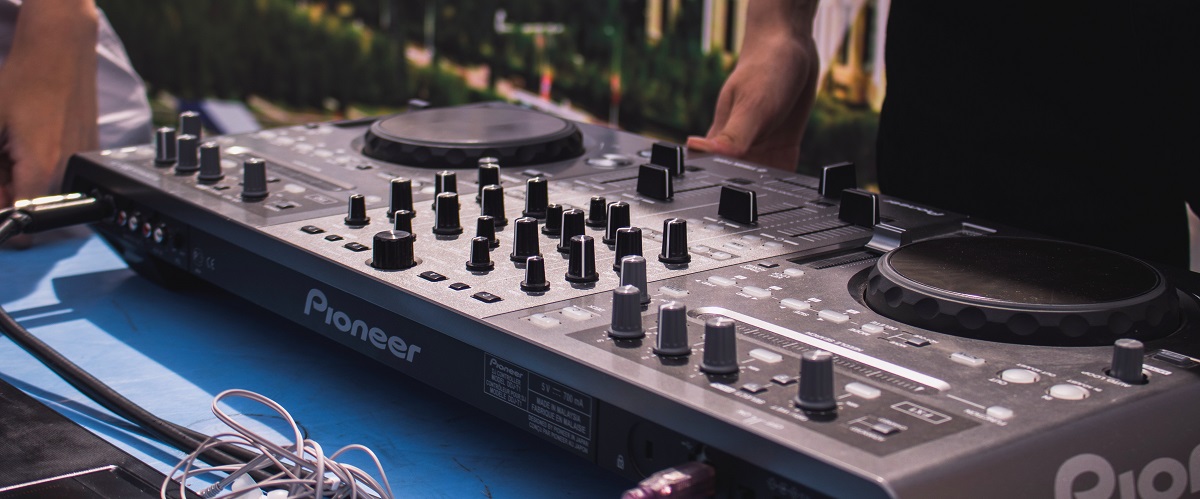
6. Resolve Technical Issues with DJ Equipment
Having the right gear is essential to becoming a great DJ, but having it set up properly can be just as important. That’s why it’s important for both beginner and advanced DJs to take the time to understand how their equipment works and resolve any technical issues as soon as possible.
From making sure your DJ tech is up-to-date and compatible with other hardware, to troubleshooting common mixer problems, there are several steps you can take to ensure your mixing techniques run smoothly.
The first step is to make sure all of your DJ gear is compatible with one another. If you’re using different brands or models of mixers or digital audio workstations, check that they work together before attempting more complex tasks like mixing songs together.
Once you’ve got everything set up properly, move on to troubleshooting common issues such as connectivity between devices or sound levels across channels.
Improving your DJ skills also means taking the time to familiarize yourself with various settings and effects available on most mixers. Learning what each knob does will help you achieve a better sound when transitioning from song to song or creating live remixes during performances – something that will really impress your audience!
Whether you’re new to the game or have been at it for years, ensuring that all of your DJ tech is in order should be top priority if success in this field is what you seek. Taking steps like these will not only make things easier once showtime arrives but also give you confidence knowing that no technical difficulties stand in the way of a successful performance!
7. Get HQ DJ Headphones
Investing in high-quality headphones will give you the sound clarity and comfort you need to take your DJing to the next level. As a beginner DJ, it’s essential that you have quality audio gear. Here are three steps to help guide you in getting the right pair of headphones for your setup.
First, consider what type of headphones best suit your needs as a DJ. Over-ear headphones provide great sound isolation while being comfortable to wear during extended sets. On-ear models offer good portability but more limited sound isolation capabilities.
Second, check out reviews online from industry professionals and other DJs who have tested various models of headphones for their own use. This is an invaluable way to learn about different features, such as frequency response and impedance levels, before making an investment.
Thirdly, try out several pairs at a local music shop or retailer before deciding on one model. Ask questions about the types of music genres each model is designed for and how comfortable they are to wear over long periods of time. Keep in mind that DJing requires intense listening sessions, so comfort should be one of your top priorities when selecting a pair of headphones!
Using these tips and tricks can help improve your DJ skills and lead to better performance outcomes overall. Not only will you be able to monitor better with higher quality audio, but you can also add some personal style with fashionable designs available on certain brands! So find yourself some good DJ headphones today. After all, it’s an essential part of equipment for any seasoned pro or upcoming star!
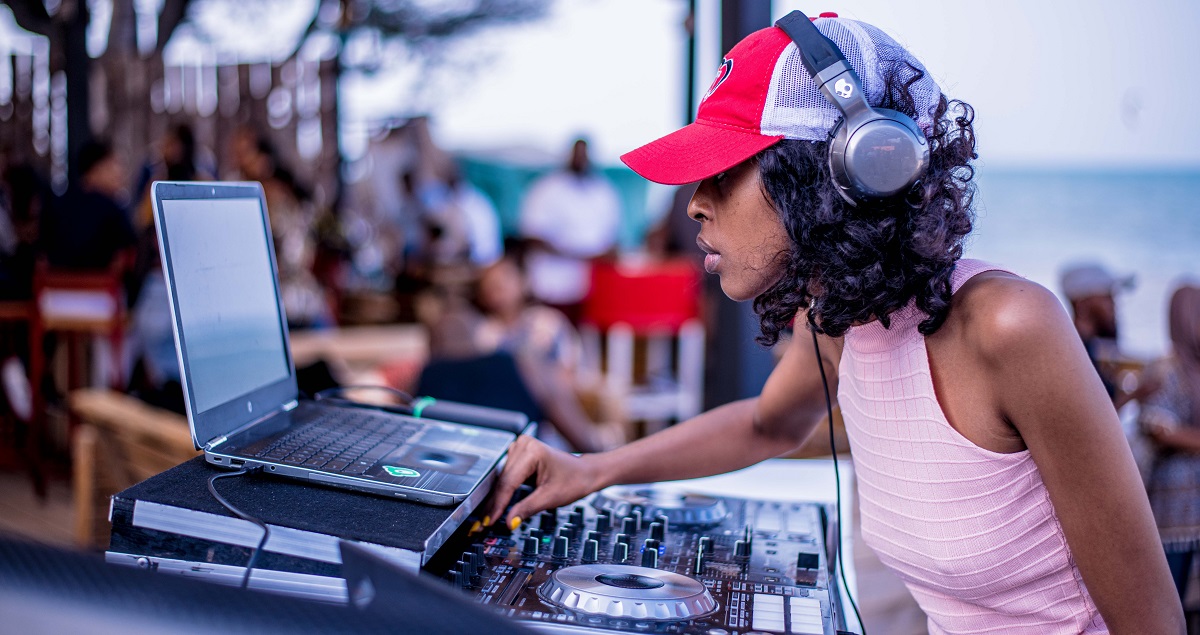
8. Control Energy in Your DJ Sets
Taking control of the energy in your sets can help create a memorable experience for your audience. As a DJ, it’s important to understand how to keep control of the energy level in your mixes and adjust on the fly.
You can do this by using a controller or other tools such as EQ, effects, and filters. Mastering these skills will refine your mixing techniques and ensure each set is different from the last one. The more you practice, the better you’ll get at controlling energy levels in your sets.
Start mixing songs that have similar vibes and use transitions that bring out certain elements of each song while maintaining an even flow throughout your mix. This will allow you to maintain an even tempo and avoid any sudden drops or abrupt changes that would disrupt the vibe of your set.
Additionally, experiment with various effects such as reverb or delay to give each transition added texture and depth. This will help keep listeners engaged throughout your performance.
As a DJ, it’s essential to stay ahead of trends to maintain relevance amongst listeners who desire innovation in their music selection. Utilizing new technology like controllers is one way for DJs to stay up-to-date with current trends and hone their DJing skills simultaneously. This involves learning how to manipulate knobs, faders, buttons, etc., all while adding interesting transitions between songs and keeping track of time during long mixes. Without proper practice, it can be a difficult task.
Overall, perfecting control over energy levels in sets requires dedication but is worth it if done right. This skill is essential for creating enjoyable experiences for listeners who want something unique when attending events or engaging with live streams online. With enough practice, any DJ looking to take their craft seriously can develop advanced mixing skills that will surely impress.
9. Use Breakdowns
Investigating the truth of a theory can add depth to your mixes and hook the audience. Whether you’re a beginner or an advanced DJ, using breakdowns in your sets is one way to go about this.
Breakdowns are pauses in the music where the beat drops out and transitions into another track, creating contrast in energy and giving your set more dynamic range.
Here are 5 tips for incorporating breakdowns into your mixes:
- Utilize EQ filters to create gradual buildup before transitioning to a breakdown
- Add vocal samples during breaks for added interest
- Experiment with different types of percussion such as snare rolls or hi-hats
- Use sound effects sparingly for atmosphere and texture
- Layer several short loops together for an interesting effect.
By familiarizing yourself with these techniques, you’ll be able to create powerful moments that captivate listeners and keep them engaged throughout your entire set.
With practice and experimentation, you’ll be able to master new methods of mixing that will help propel your DJ career!
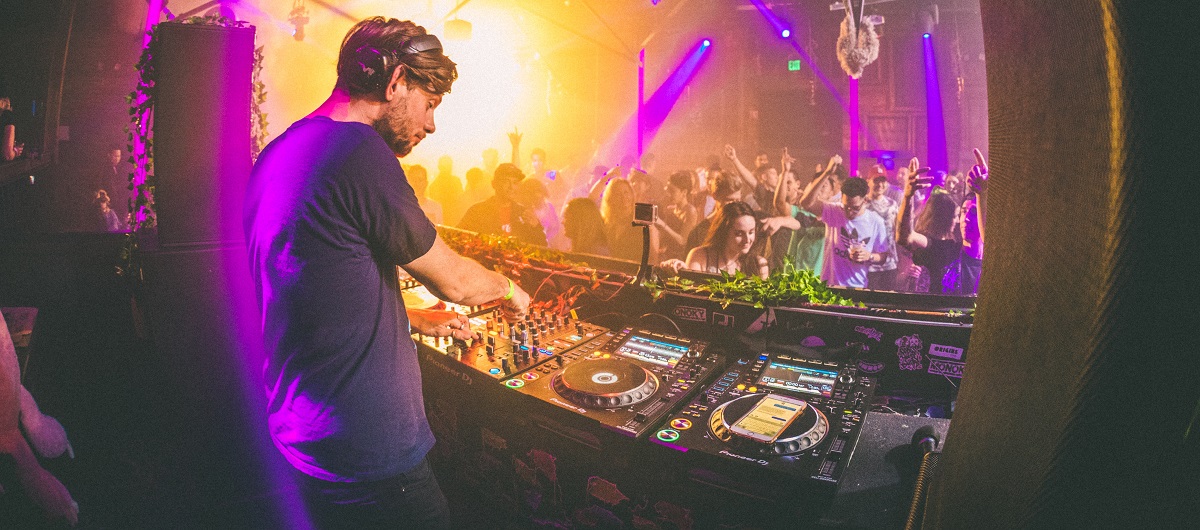
10. Use Frequency Volumes to Improve the Mix
Tweaking the frequency volumes of your mix can make a huge difference in its overall sound and energy, allowing you to craft an immersive experience for your audience. As a DJ, you should develop an understanding of how each frequency range affects the feel of your mix.
Bass frequencies will bring out that thumping beat, while higher frequencies will add clarity and richness. Using EQs or filters, you can isolate each frequency range to adjust volume levels independently. Learning how to manipulate these frequency levels is key when creating unique DJing styles and mixing experiences.
Serato DJ offers powerful tools for this purpose with their advanced equalizer settings, which allow you to control the curve of each frequency band separately. You’ll also find many modern DJ courses teaching DJs how to use these tools effectively when crafting their mixes. If you’re serious about taking your mixing style up a notch, it’s important that you understand the basics behind manipulating these frequencies as they are essential elements in any great DJ set.
You may think it requires a lot of technical know-how, but mastering this skill is actually quite simple once you get familiar with it. Start by experimenting with small adjustments on different tracks within your set and see what works best for you – eventually, these small tweaks will become second nature! With enough practice and dedication, you’ll be able to create dynamic sets that keep people dancing all night long!
11. Use DJ Effects
Adding DJ effects to your set is a great way to take your mix to the next level and create an unforgettable experience for your crowd. Here are three tips for incorporating these unique DJ effects:
- Use harmonic mixing techniques to blend two tracks together using the same key or similar notes.
- Utilize a range of effects such as echo, reverb, flanger, and stutter to add texture and depth to your mix.
- Experiment with on-the-fly sound processing tools like filters and compressors that can help you refine and shape each track in real time.
With some practice, you’ll be able to craft complex arrangements that will make any audience go wild!
Becoming a better DJ goes beyond just playing good music – it’s about mastering new skills like adding creative effects. This will result in truly unique mixes that stand out from the crowd. Utilizing these tips and DJ techniques will help you out on the way of becoming a more skilled DJ, so have no worries – we got you!
12. Use DJ Software Looping
Mastering the art of looping is key to creating a captivating DJ set – so get creative and have fun with it! Utilizing DJ software to create loops and samples can help bring your mixes to life. Whether you’re an aspiring DJ just starting out, or a veteran looking to stay ahead of the game, exploring loops and samples can be a great way to add unique elements to your music.
When using digital DJ software, you can layer multiple loops together in real-time, enabling you to experiment with different combinations until you find something that resonates with your audience. You’ll also need to learn how to use tempo-synchronization tools so that all of the loops play in perfect harmony. Just remember not to overdo it; too many layers can end up clashing together and muddying up the soundscape.
Using loops is an effective way for DJs at any level in their career development process – from beginner learning how to DJ right through advanced mixing techniques – to take their sets from good to great by adding extra texture, energy, and complexity. It’s also a great way for DJs who are new to the scene or want more control over their mixes than vinyl or CD players allow them access to.
Looping tools aren’t just for creating original tracks either; they’re also incredibly useful when performing live sets as well as when preparing pre-mixed sets for download or streaming services like SoundCloud & Spotify.
By experimenting with different sounds and effects, you’ll be able to give your mix the added depth and spice needed for a truly mesmerizing experience! So don’t shy away from experimentation – embrace it – because there’s no limit on creativity when it comes to looping!
Conclusion
Wrapping up my essential DJ tips, I’d like to leave you with one final thought:
All DJs must make sure that they’re using their tools responsibly. Just like a carpenter needs the right tools to build something beautiful and lasting, so too does a DJ need the right tools and techniques to create an amazing and memorable mix.
The power of music lies in its ability to move people emotionally; use it wisely and you can craft unforgettable experiences for your listeners.

